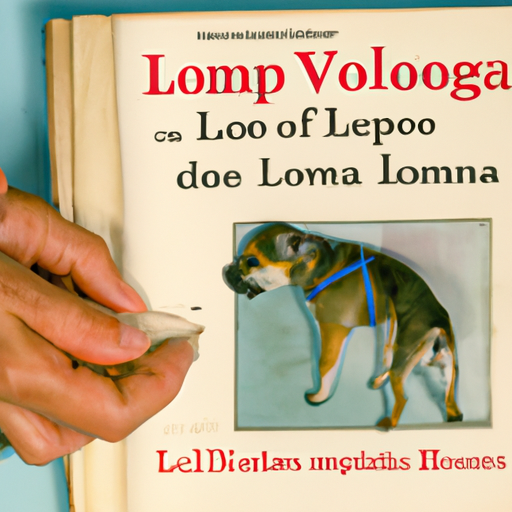As a dog owner, there’s nothing more distressing than finding a lump or bump on your beloved pet. One of the more common growths in dogs is a lipoma, a benign fatty tumor. While these tumors are usually harmless, they can sometimes cause discomfort or interfere with a dog’s movement. Fortunately, they can often be treated effectively. This article will guide you on how to handle lipomas in dogs.
- Table of Contents
- Understanding Lipomas
- Identifying Lipomas
- Treatment Options for Lipomas
- Home Care for Dogs with Lipomas
- Preventing Lipomas in Dogs
-
FAQ
-
Key Takeaways
- Lipomas are benign fatty tumors.
- They are usually harmless but can sometimes cause discomfort.
- Treatment options may include surgery, liposuction, and steroid injections.
- A healthy diet and regular exercise can help prevent lipomas.
Understanding Lipomas
Lipomas are soft, fatty lumps that form under the skin. They are most common in middle-aged and older dogs, especially those who are overweight. Although lipomas are benign, it’s important to have any lump checked by a vet to rule out more serious conditions like cancer.
According to a resourceful article from PetMD, lipomas are composed of mature fat cells and are usually round, moveable, and painless. They can appear anywhere on your dog’s body but are most commonly found on the chest, abdomen, and legs.
Identifying Lipomas
If you find a lump on your dog, it’s important to have it checked by a veterinarian. They will likely perform a fine-needle aspiration, a procedure where a small needle is used to extract cells from the lump for examination under a microscope. This can usually determine whether the lump is a benign lipoma or something more serious.
Here are some resources on OneTopDog that may help you recognize potential health issues in your pooch:
– Spotting and addressing health problems in senior dogs
– Understanding the importance of regular vet check-ups
– Recognizing and managing dog obesity
Treatment Options for Lipomas
Treatment for lipomas in dogs depends on the size, location, and any symptoms your dog may be experiencing. Here are the most common treatment options:
- Observation: If the lipoma is small and not causing any discomfort or mobility issues, your vet may choose to simply monitor it for any changes.
- Surgery: For larger lipomas, or those that are causing discomfort or restricting movement, surgical removal might be the best option.
- Liposuction: This less invasive procedure can be used to remove lipomas in sensitive areas or in dogs who may not be good candidates for surgery.
- Steroid Injections: In some cases, steroid injections can help shrink lipomas. This treatment is usually reserved for lipomas that are not good candidates for surgery or liposuction.
The American Kennel Club provides more detailed information regarding lipoma treatments.
Home Care for Dogs with Lipomas
If your dog has been diagnosed with a lipoma, there are steps you can take at home to ensure they remain comfortable:
- Monitor the Lipoma: Keep an eye on the size and shape of the lipoma. If it seems to be growing or changing, contact your vet.
- Maintain a Healthy Weight: Overweight dogs are more prone to lipomas. Feed your dog a balanced diet and ensure they get regular exercise.
- Regular Vet Check-ups: Regular check-ups can help catch any new lipomas early, when they are easier to treat.
Preventing Lipomas in Dogs
While the exact cause of lipomas is unknown, there are steps you can take to help prevent them:
- Maintain a Healthy Weight: Obesity is a risk factor for lipomas. Ensure your dog gets regular exercise and feeds them a balanced diet.
- Regular Vet Check-ups: Regular vet check-ups can help catch any potential lipomas early.
- Avoid Exposure to Toxins: Some research suggests that exposure to certain toxins may increase the risk of lipomas.
Frequently Asked Questions
Q: Are lipomas dangerous?
A: Lipomas are benign tumors, meaning they are not cancerous. However, they can cause discomfort or interfere with movement if they grow large or are in certain locations.
Q: How are lipomas diagnosed?
A: Lipomas are typically diagnosed through a fine-needle aspiration, where a small needle is used to extract cells from the lump for examination under a microscope.
Q: How can I prevent lipomas in my dog?
A: While the exact cause of lipomas is unknown, ensuring your dog maintains a healthy weight, gets regular vet check-ups, and avoids exposure to toxins may help prevent lipomas.
In conclusion, lipomas in dogs are generally harmless but can sometimes cause discomfort or interfere with movement. Regular vet check-ups and a healthy lifestyle can help prevent these fatty tumors and ensure your dog lives a happy, healthy life.



